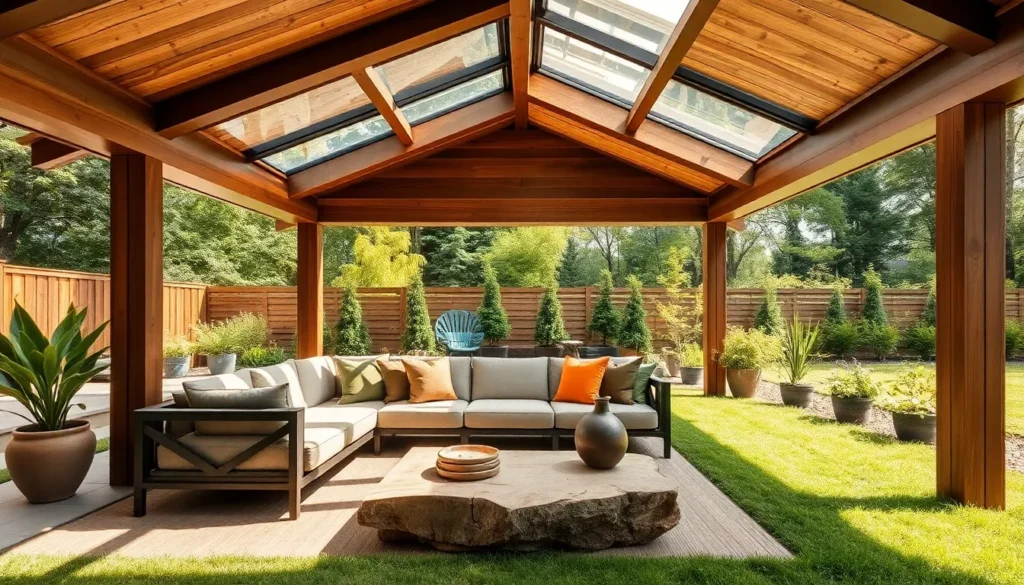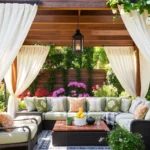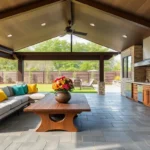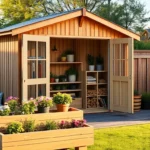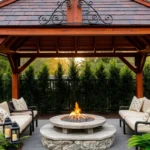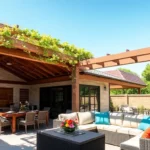As we step into 2025, the allure of outdoor living has never been more captivating, with outdoor shelter designs transforming patios into personal sanctuaries. Whether you’re just beginning to explore the possibilities of your backyard or you’re a seasoned homeowner looking to update your space, understanding the latest trends can elevate your outdoor experience to new heights. Our homes are more than just interiors; they extend into the outdoors, offering a canvas for creativity and comfort.
In this article, we’ll unveil ten innovative outdoor shelter designs that are set to redefine how we perceive and use our outdoor spaces. From sleek, modern pergolas to cozy, weather-resistant pavilions, these ideas will inspire you to enhance your outdoor living area, combining style with functionality. Get ready to discover practical design solutions that will make your patio not just a place to relax, but a true extension of your home.
Sustainable Materials for Modern Shelters
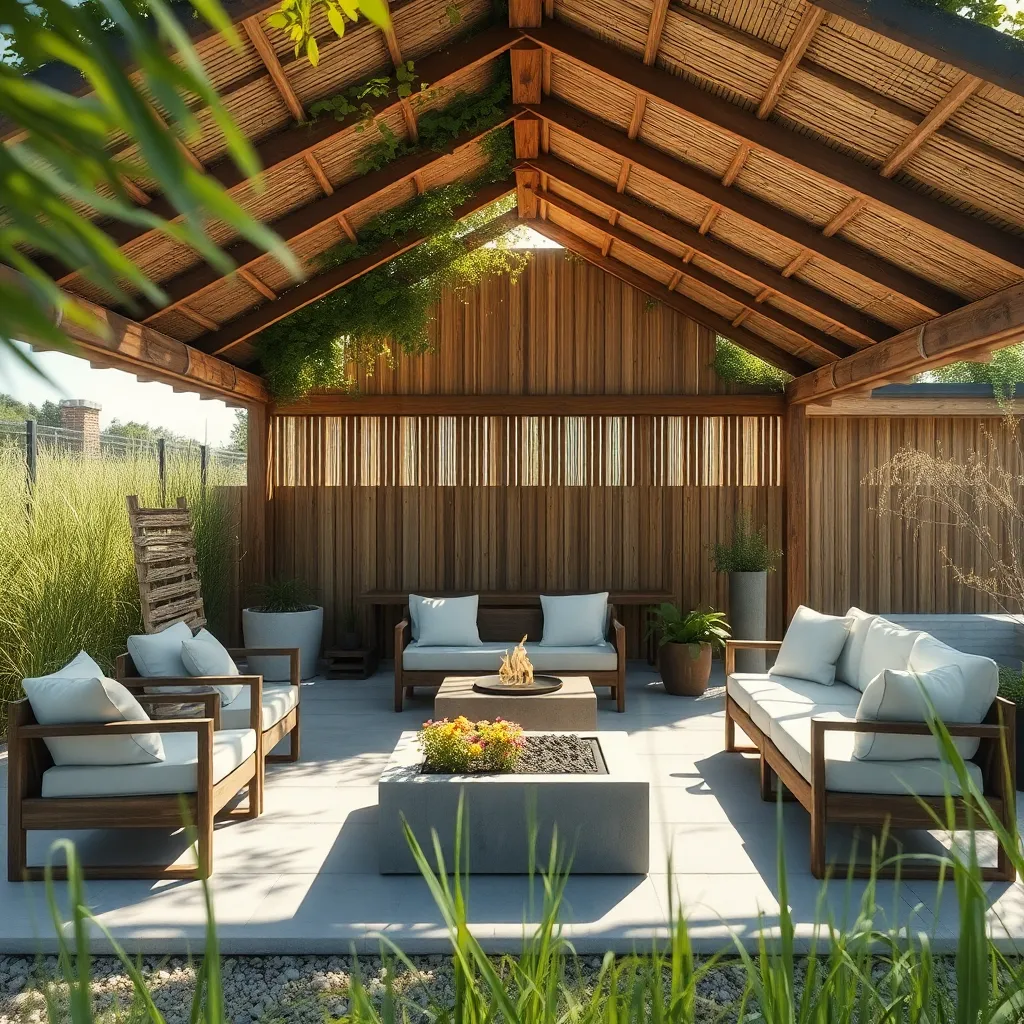
Incorporating sustainable materials into your outdoor shelter design is not only environmentally friendly but also adds a modern touch to your space. Consider using reclaimed wood or bamboo, both of which are durable and offer a rustic appeal. For a sleek and contemporary look, opt for recycled steel or aluminum, which are resistant to weather and provide a clean finish. When constructing, ensure materials are weather-treated and sourced locally to minimize environmental impact and support community businesses.
For those looking to add advanced sustainable elements, integrating solar panels into the roof structure can provide energy for lighting and appliances. Additionally, using permeable paving stones for flooring helps manage rainwater runoff naturally. To enhance the aesthetic, consider planting a green roof with native flora to improve insulation and attract local wildlife. These tips not only enhance the sustainability of your shelter but also increase its functionality and visual appeal, making it a standout feature in your backyard.
Innovative Retractable Roof Designs
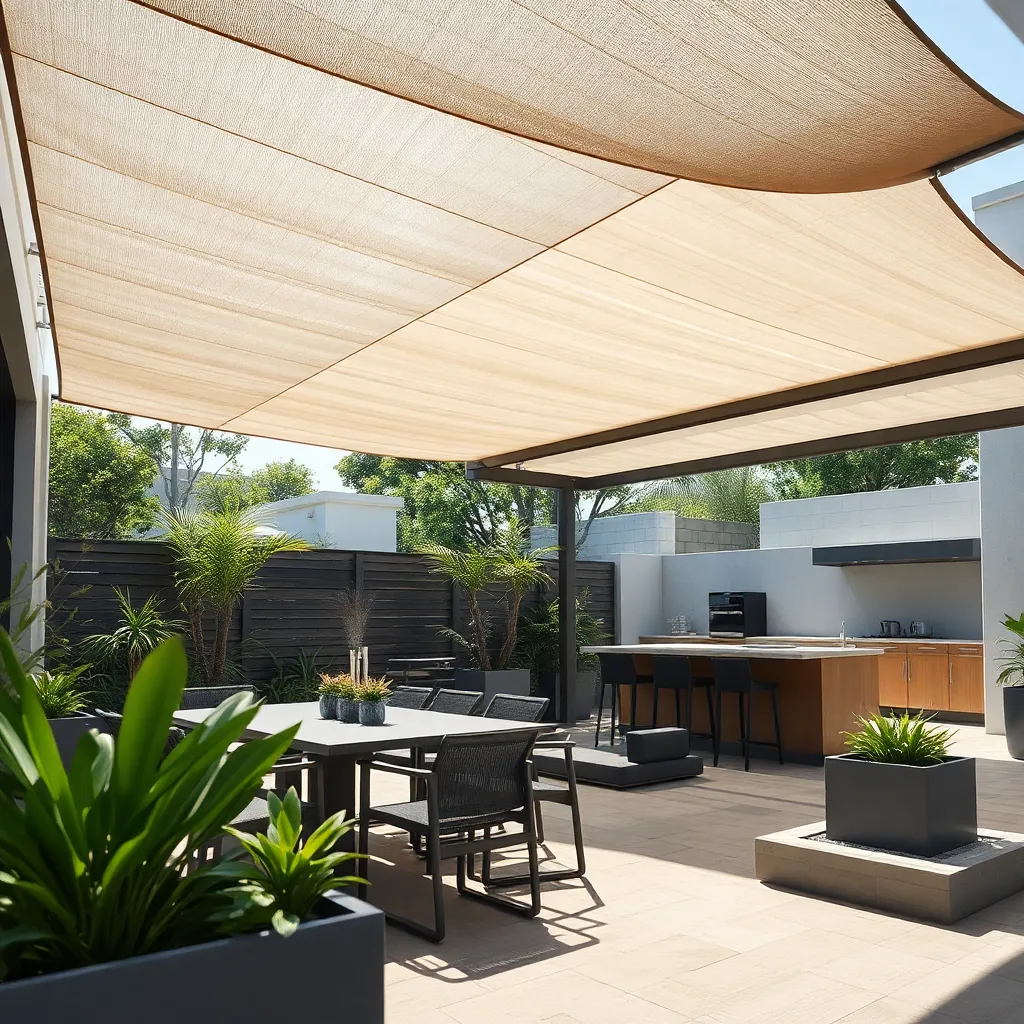
Innovative retractable roof designs are transforming outdoor spaces into versatile and dynamic living areas. Consider using lightweight, weather-resistant materials such as polycarbonate panels or aluminum frames for a robust yet flexible roofing solution. These materials not only withstand diverse weather conditions but also allow for easy manual or motorized operation, making them ideal for year-round use. For homeowners looking to blend aesthetics with functionality, opt for roofs with integrated lighting systems or solar panels, which can enhance ambiance and sustainability.
For those new to this concept, start with a simple, mechanical pulley system to retract the roof manually, ensuring you measure your space accurately to accommodate the full retraction. More advanced setups might include automated smart systems that can be controlled via smartphone apps, offering convenience at your fingertips. When designing your retractable roof, ensure that the system is securely anchored and consider adding gutter systems to manage rainwater effectively. These tips make retractable roofs an enticing option for both beginners and seasoned DIY enthusiasts looking to maximize their outdoor living experience.
Integrating Smart Technology Features
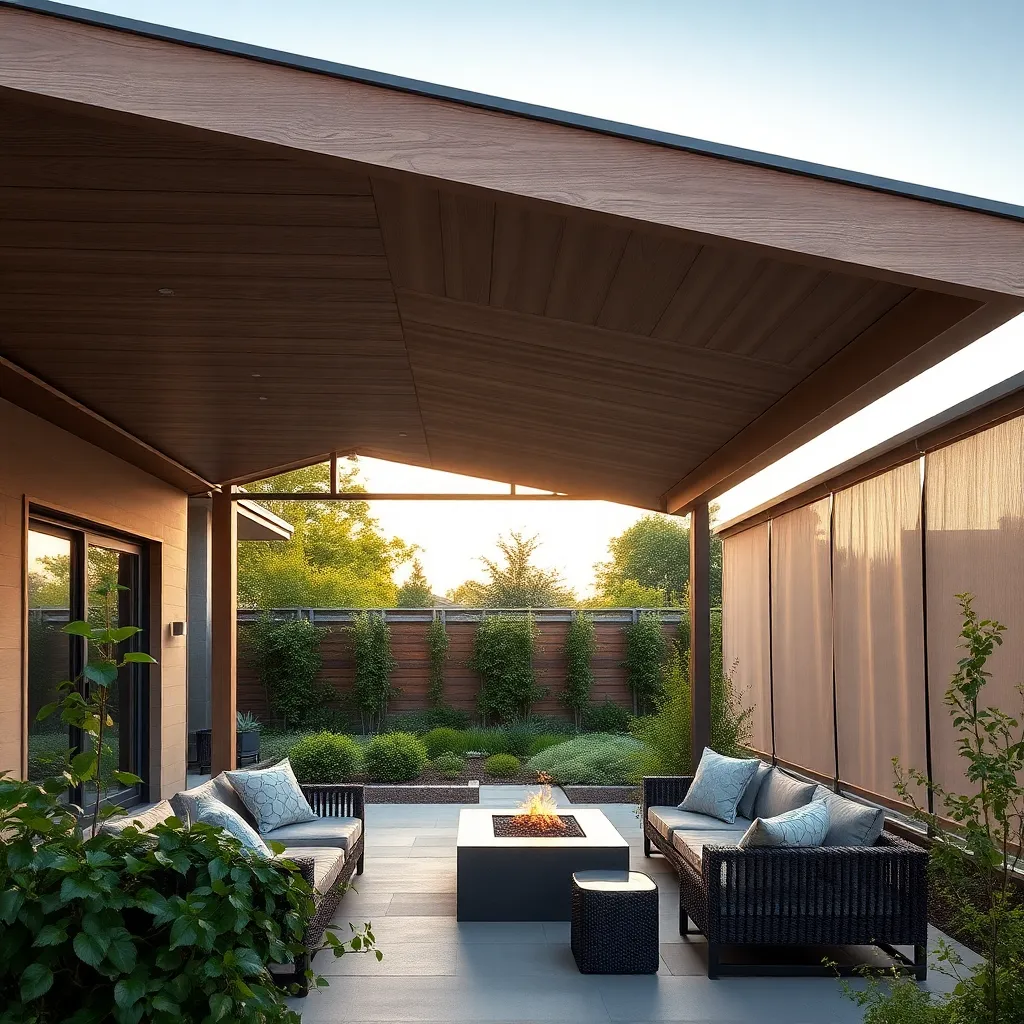
Incorporating smart technology into your outdoor shelter can significantly enhance both functionality and convenience. Consider installing smart lighting systems that allow you to control brightness and color from your smartphone, setting the perfect ambiance for any occasion. Additionally, integrating automated climate control systems is a game changer, especially in regions with variable weather. These systems can adjust heating or cooling elements based on real-time weather data, ensuring comfort all year round.
For a more advanced setup, homeowners can explore smart security features like motion sensors and cameras to keep the outdoor area safe. Opt for weather-resistant materials like high-grade aluminum or treated wood to ensure the longevity of embedded technology. Ensure that any smart devices you choose are compatible with major smart home ecosystems for seamless integration. By taking these steps, you create a sophisticated, adaptable outdoor space that meets your needs and enhances your lifestyle.
Compact Shelters for Urban Spaces
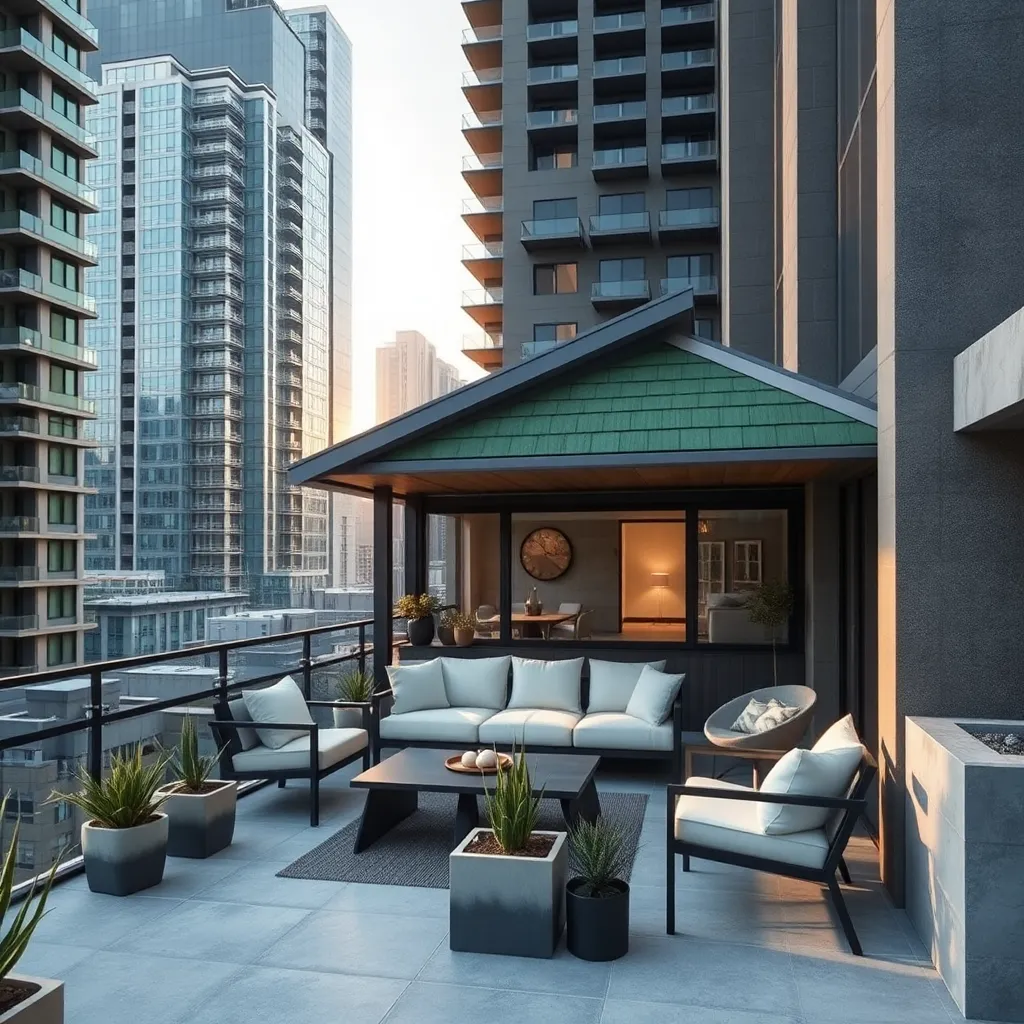
In urban environments where space is a premium, compact shelters provide a stylish yet practical solution for maximizing outdoor areas. Consider using modular designs with lightweight materials such as aluminum frames and polycarbonate panels. These materials offer durability and ease of assembly, perfect for city dwellers who need to install or dismantle quickly. For beginners, start with a simple pergola or gazebo kit that can fit into a small patio or rooftop garden.
Advanced gardeners can enhance their compact shelters by incorporating vertical gardens or solar-powered lighting to make the most of limited space. Vertical gardens not only add greenery but also improve air quality and provide insulation. Ensure your structure includes adjustable features like retractable awnings or folding walls, allowing you to adapt to changing weather conditions effortlessly. With thoughtful planning, even the smallest urban spaces can become a tranquil outdoor retreat.
Eco-Friendly Shelter Solutions
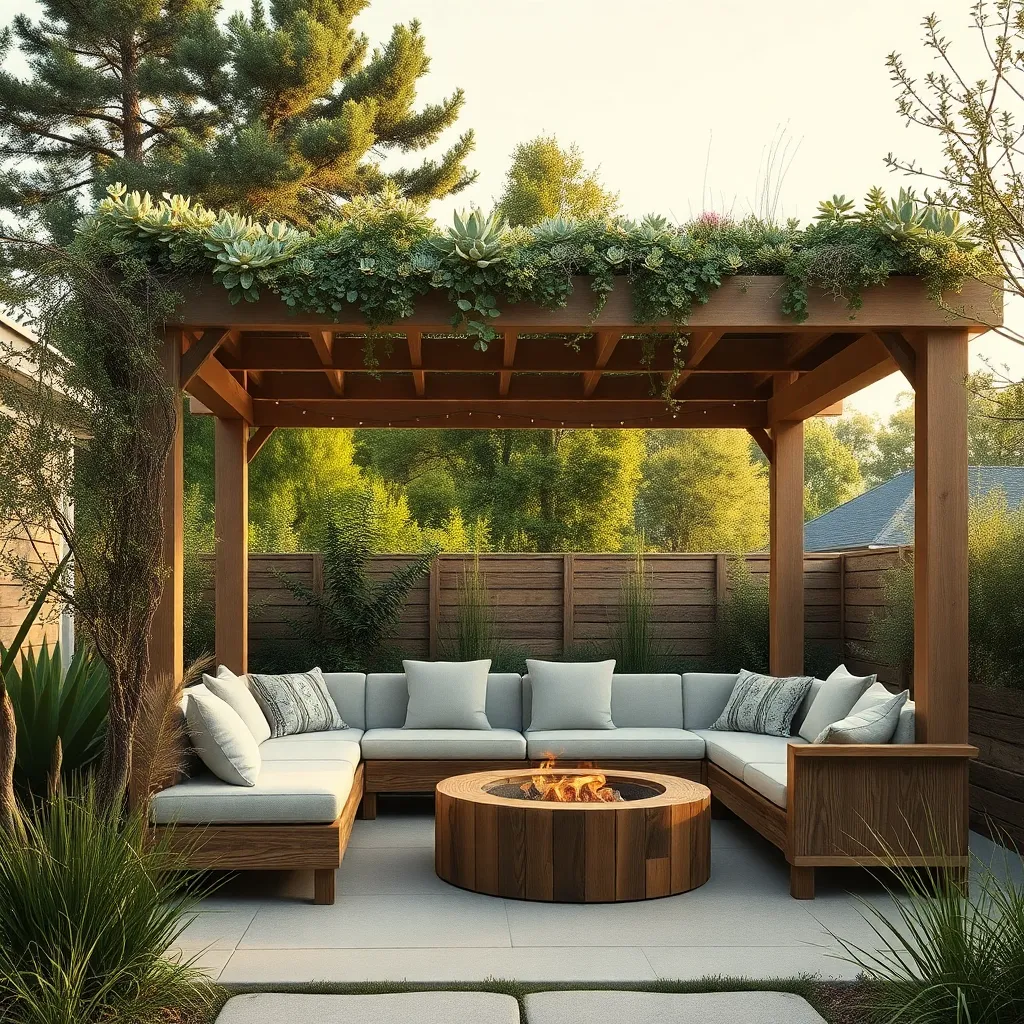
Embracing eco-friendly shelter solutions doesn’t just benefit the environment; it can also enhance your garden’s aesthetic and functionality. Start by choosing sustainable materials such as bamboo, reclaimed wood, or recycled metal for your structure. These materials are not only durable but also minimize your carbon footprint. For a beginner-friendly project, consider building a simple pergola using bamboo poles. Ensure the dimensions suit your space—around 8 feet tall and 10 feet wide is a versatile size for most gardens.
For those ready to tackle more advanced eco-friendly designs, incorporating living roofs or walls can further boost your shelter’s sustainability. A living roof, planted with native, drought-resistant plants, improves insulation and biodiversity. Alternatively, integrate solar panels to harness renewable energy. When planning, remember to factor in structural support for the additional weight of greenery or panels. Use an angled roof design to optimize sunlight exposure, ideally around 30 degrees for maximum efficiency. These enhancements not only reduce energy consumption but also make your outdoor space a true sanctuary.
Open-Concept Layouts for Natural Light
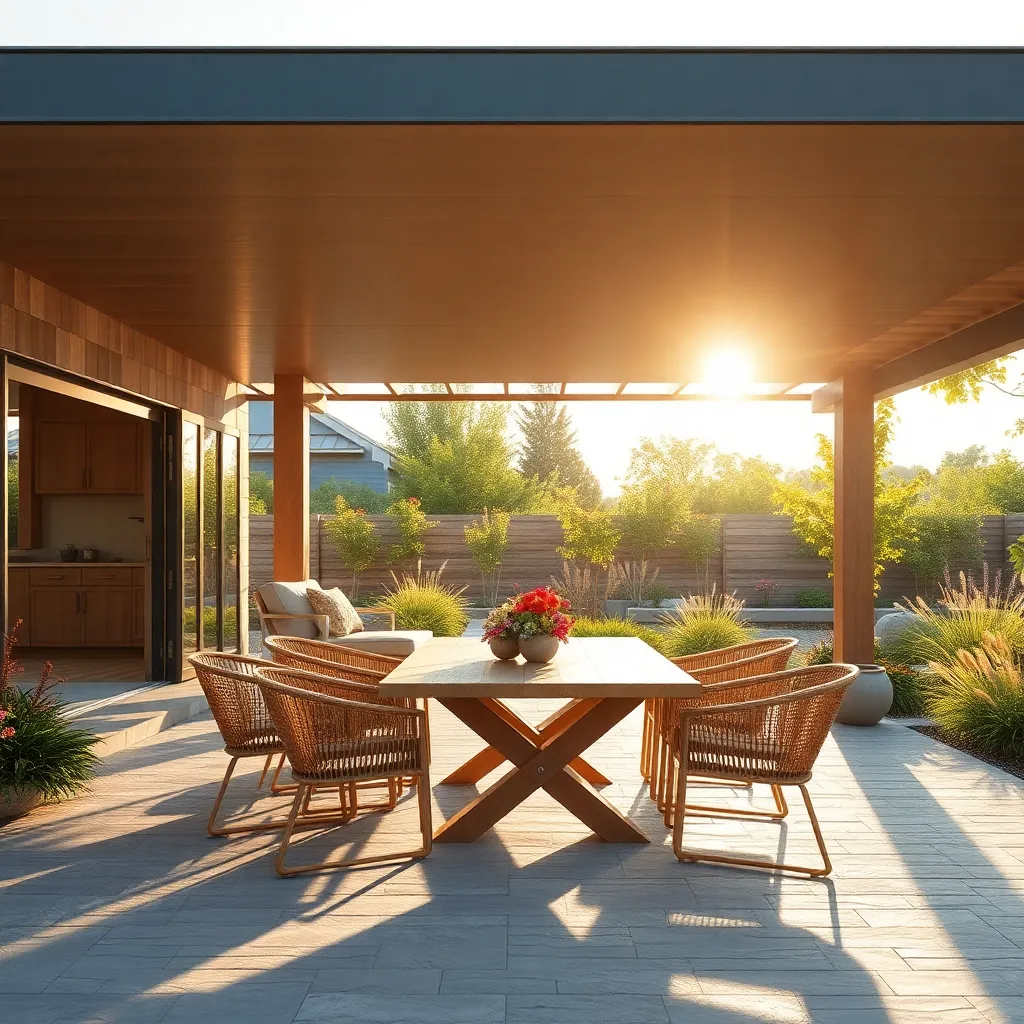
Embracing an open-concept layout for your outdoor shelter not only maximizes natural light but also creates a seamless transition between your indoor and outdoor spaces. To achieve this, consider using materials like tempered glass or polycarbonate for roofs and walls, which allow sunlight to filter through while providing shelter from the elements. For a truly open feel, opt for a minimalistic design with fewer walls or retractable screens that can be adjusted depending on the weather, offering both privacy and openness.
Incorporating flexible design elements such as sliding doors and adjustable louvers can enhance the functionality of your open-concept shelter. These features allow you to control light and airflow, creating a comfortable environment year-round. For beginners, using pre-fabricated kits with clear instructions can simplify the construction process. Meanwhile, experienced builders might explore custom designs, utilizing sustainable materials like bamboo or reclaimed wood to add a unique touch to their outdoor retreat. For the best results, ensure your shelter is oriented to capture the optimal amount of sunlight throughout the day.
Minimalist Designs for Maximum Impact
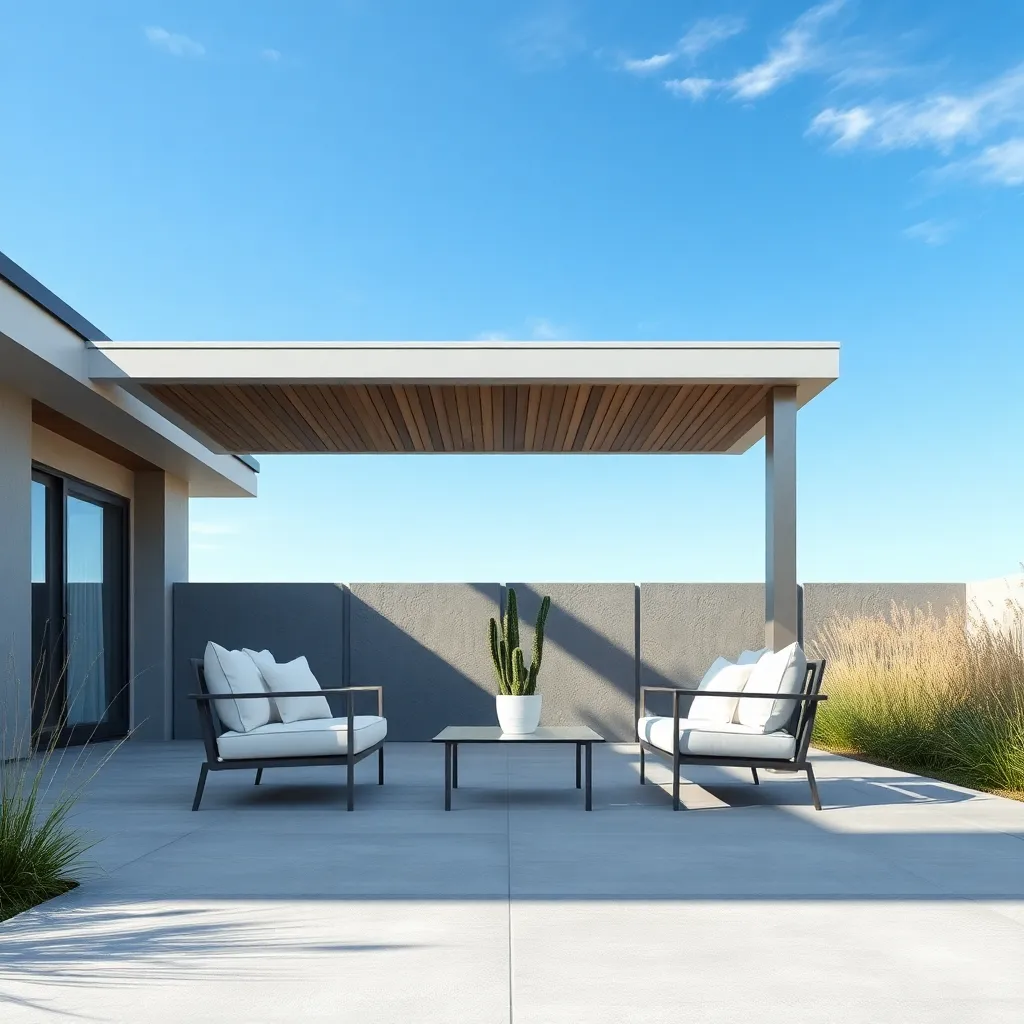
Embrace the beauty of simplicity with minimalist outdoor shelters that focus on clean lines and functional spaces. Start by using materials like steel and glass to create a sleek, modern look while ensuring durability against the elements. For beginners, consider a straightforward design with a flat roof and a basic structure measuring around 10×10 feet. This provides a cozy area for relaxation without overwhelming your space.
Elevate your minimalist design by incorporating multi-functional elements such as adjustable louvered roofs or sliding glass panels. These features allow you to control sunlight and ventilation, making your shelter adaptable to various weather conditions. Advanced gardeners might add integrated planters or a vertical garden to the structure, enhancing both aesthetics and sustainability. Remember, the key to minimalist design is to focus on quality over quantity, ensuring every element serves a purpose.
Customizable Modular Shelter Options
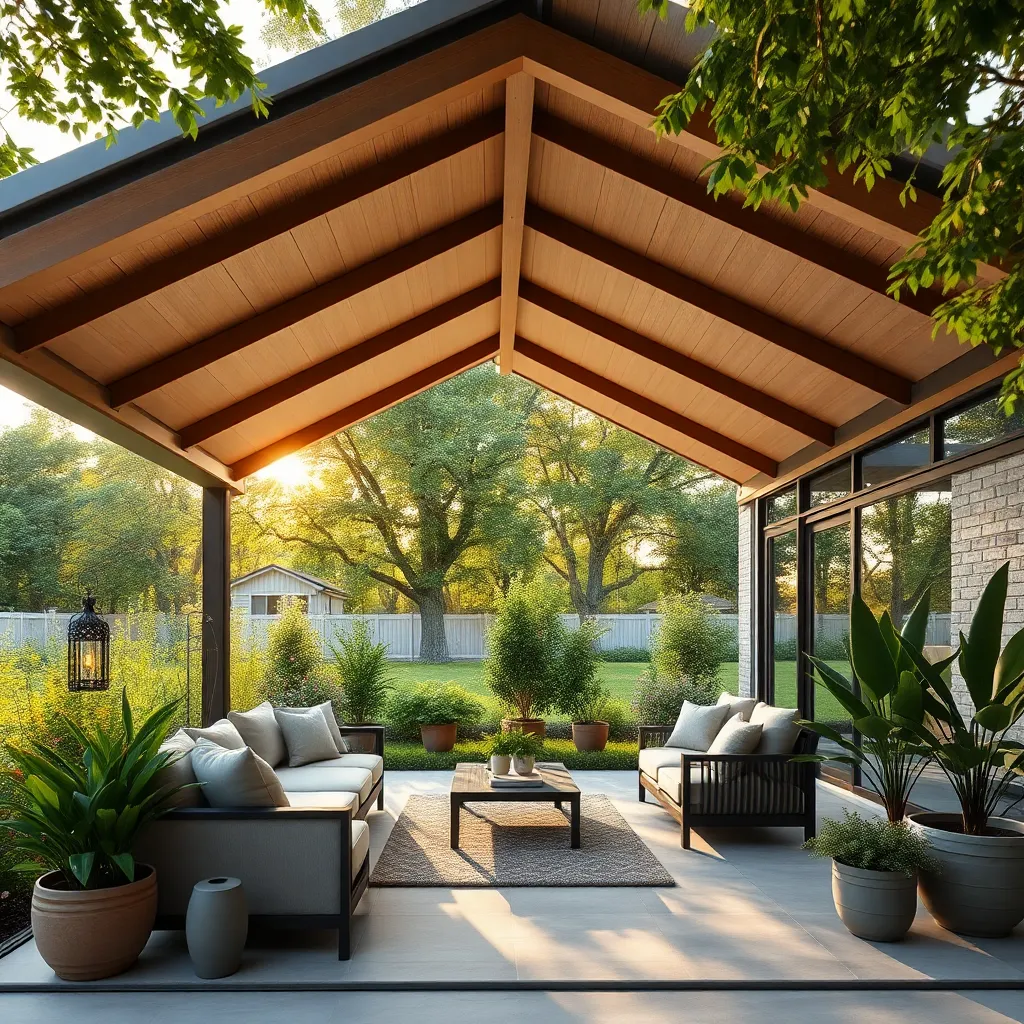
Embrace the flexibility of customizable modular shelters to create a personalized outdoor retreat that suits your unique needs. These shelters are constructed using interlocking panels that allow you to expand or configure the space as desired. For beginners, consider starting with a simple setup using lightweight aluminum frames and weather-resistant fabric panels, which are easy to assemble and adjust. As you gain confidence, advanced enthusiasts can explore incorporating sustainable materials like reclaimed wood and solar panels to enhance both functionality and eco-friendliness.
To optimize your modular shelter, consider the strategic placement of features such as adjustable shading systems and integrated seating. Begin by selecting panels with pre-drilled holes for easy installation of accessories like retractable awnings. Advanced users might experiment with smart home technology, incorporating sensors to automatically adjust lighting or temperature based on the time of day. Ensure your design includes proper ventilation by spacing panels strategically or incorporating mesh sections to promote airflow, keeping your outdoor space comfortable and inviting all year round.
Blending Indoor-Outdoor Living Spaces
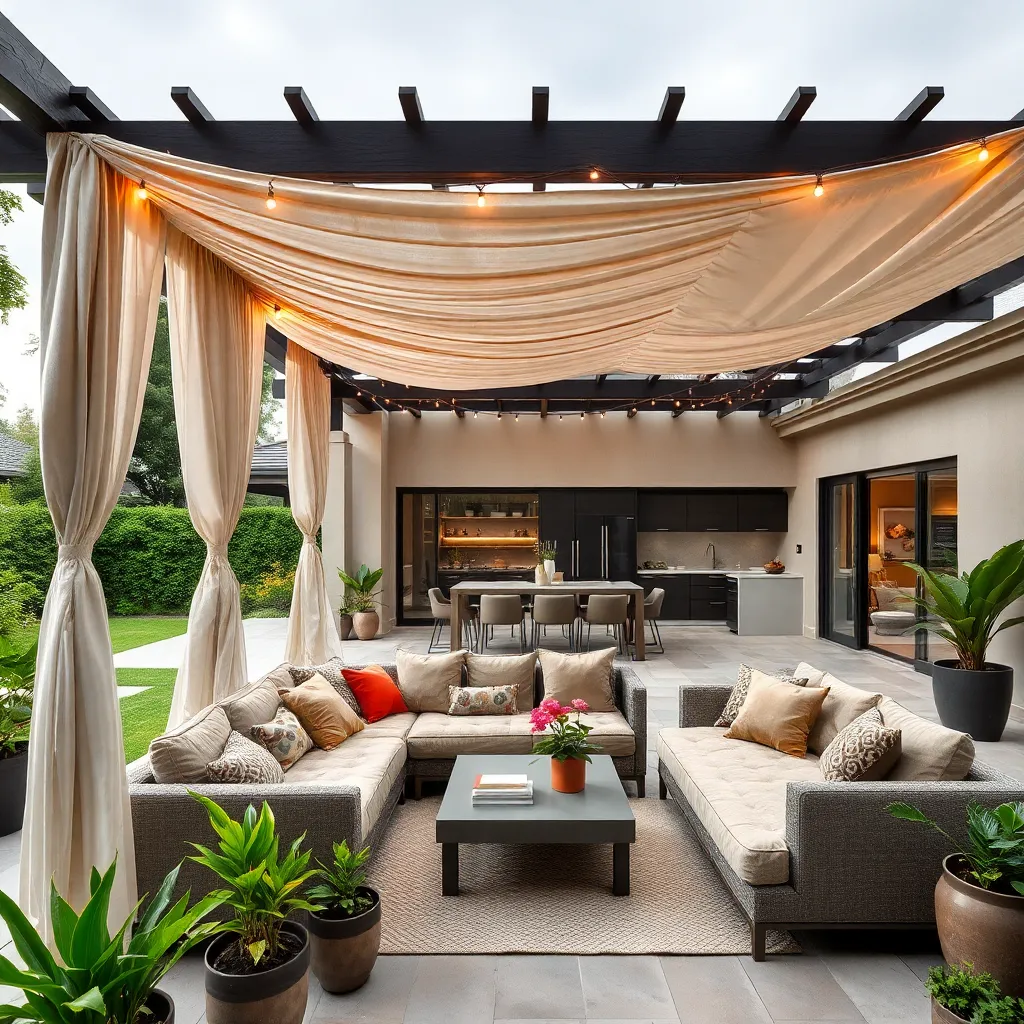
To successfully blend indoor-outdoor living spaces, start by focusing on seamless transitions between areas. Consider using large sliding glass doors or accordion-style doors that open wide to connect the indoors with a patio or deck. This approach not only enhances the flow of natural light but also creates an airy, open atmosphere. Opt for weather-resistant flooring materials such as porcelain tiles or composite decking that can extend from your interior to the exterior, maintaining a consistent design theme.
Incorporate design elements like retractable awnings or pergolas with adjustable louvers to provide shade and weather protection without sacrificing openness. Furnish the space with durable, weatherproof furniture that mirrors your indoor style, using materials like teak or powder-coated aluminum for longevity. For an advanced touch, integrate outdoor lighting solutions such as LED strip lights along pathways and under seating areas to enhance ambiance and usability at night. These strategies ensure your outdoor shelter is both practical and inviting year-round.
Personalizing Shelters with Unique Accents
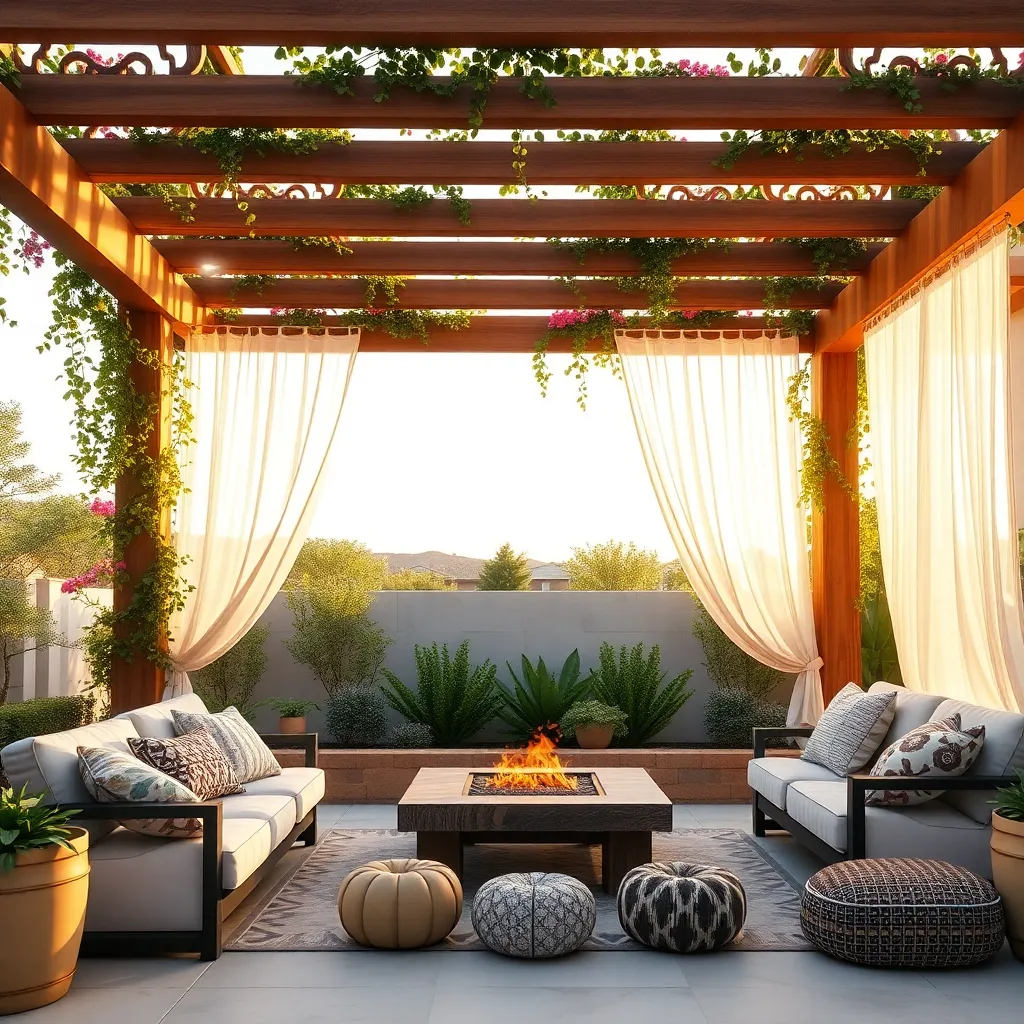
Transforming your outdoor shelter into a personalized oasis can be achieved by incorporating unique accents that reflect your style. Start by adding custom lighting elements such as solar-powered string lights or lanterns to create ambiance and functionality. Consider using reclaimed wood for accent walls or furniture to add character and sustainability. For beginners, a simple coat of weather-resistant paint on existing structures can make a significant impact, while advanced gardeners might explore adding a living roof with succulents for a touch of eco-friendly elegance.
Materials like weatherproof fabrics can be used for cushions or drapery to enhance comfort and aesthetics in your outdoor space. Integrate decorative elements such as wind chimes, bird feeders, or water features to add sensory appeal and engage with the environment. For a chic look, consider metal accents like wrought iron or copper that develop a beautiful patina over time. Ensure all elements are appropriately sized for your space; for instance, small shelters benefit from vertical accents to draw the eye upwards without overwhelming the area. These personalized touches will not only enhance your outdoor experience but also make your shelter uniquely yours.
Conclusion: Creating Beautiful Outdoor Spaces
As we journeyed through the ’10 Trendy Outdoor Shelter Designs for 2025,’ we uncovered innovative ways to create spaces that nurture relationships. From cozy fire pits that spark intimate conversations to adaptable pergolas that provide the perfect setting for gatherings, each design reflects the essence of connection, intimacy, and shared experiences. We explored the importance of flexible designs that cater to growing families, eco-friendly structures that respect our planet, and tech-integrated shelters that keep us connected even in the heart of nature.
Now, it’s time to transform inspiration into action. Consider how you can incorporate one of these designs into your life—perhaps starting with a small backyard upgrade or planning a future outdoor project that aligns with your relationship goals. Take a moment to bookmark this article, ensuring these creative ideas are just a click away whenever you’re ready to enhance your outdoor living space.
Remember, investing in your environment is investing in your relationships. By thoughtfully designing the spaces where we gather, we lay the foundation for deeper connections and lasting memories. Embrace these ideas and prepare for a future filled with love, laughter, and togetherness.

